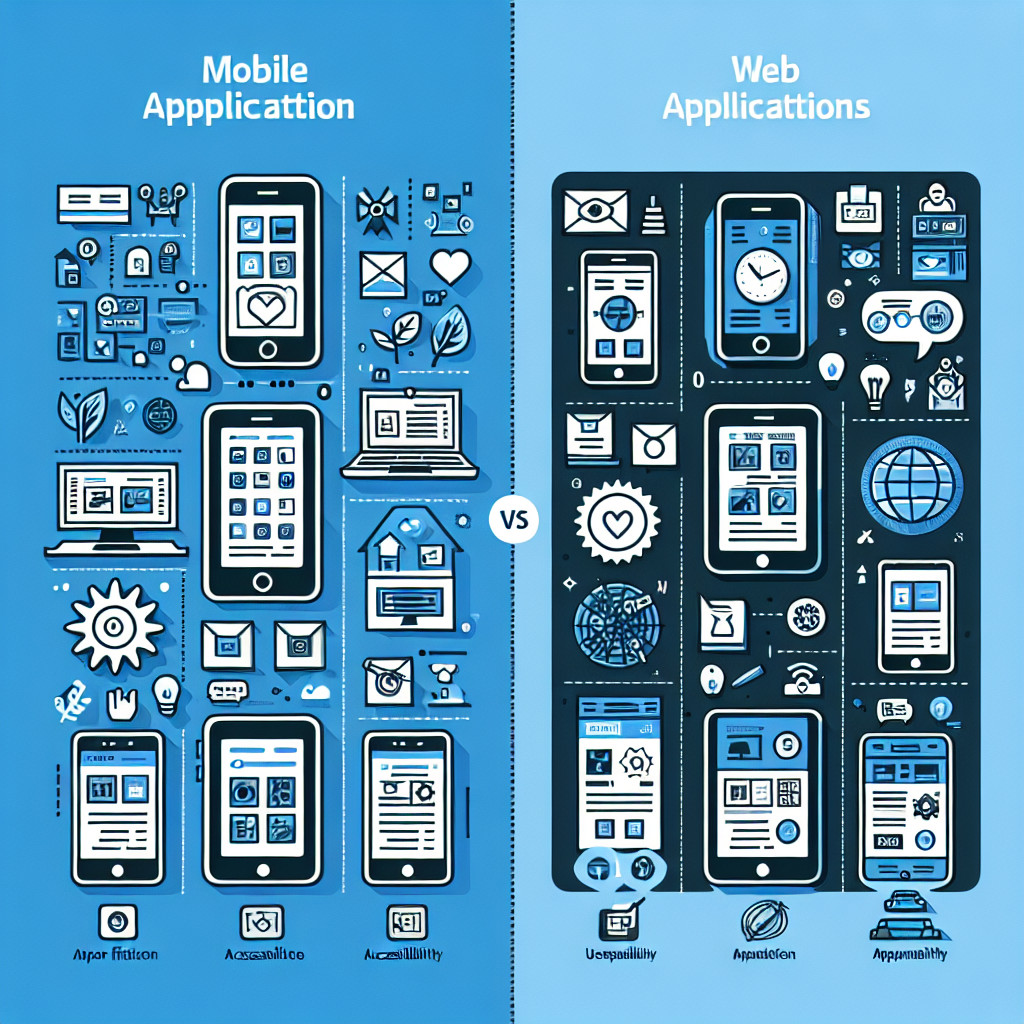- Comparison of laser cleaning to traditional cleaning methods
- Case studies of successful restoration projects using laser cleaning
- The impact of laser cleaning on the preservation of vintage vehicles
- The role of laser cleaning in removing rust and corrosion from vintage cars and motorcycles
- The versatility of laser cleaning in treating different materials and surfaces on vintage vehicles
- The role of laser cleaning in preparing surfaces for painting and refinishing in vintage vehicle restoration
- The role of laser cleaning in preserving the structural integrity of vintage vehicles
- The potential applications of laser cleaning in other areas of automotive restoration
Comparison of laser cleaning to traditional cleaning methods
Cleaning is an essential part of maintenance in various industries, from manufacturing to restoration. Traditional cleaning methods such as chemical cleaning, abrasive blasting, and manual scrubbing have been widely used for decades. However, with the advancement of technology, laser cleaning has emerged as a more efficient and environmentally friendly alternative. In this article, we will compare laser cleaning to traditional cleaning methods in terms of effectiveness, efficiency, safety, and environmental impact.
Effectiveness:
– Laser cleaning uses a high-energy laser beam to remove contaminants from surfaces without damaging the substrate. It is highly effective in removing rust, paint, grease, and other stubborn contaminants.
– Traditional cleaning methods may not be as effective in removing tough contaminants, especially in hard-to-reach areas or delicate surfaces.
Efficiency:
– Laser cleaning is a faster process compared to traditional methods. It can clean large areas in a fraction of the time it takes for manual scrubbing or abrasive blasting.
– Traditional cleaning methods require more labor and time to achieve the same level of cleanliness.
Safety:
– Laser cleaning eliminates the need for harsh chemicals and abrasive materials, reducing the risk of exposure to harmful substances for workers.
– Traditional cleaning methods may pose health hazards due to the use of chemicals and abrasive materials.
Environmental impact:
– Laser cleaning is a more environmentally friendly option as it does not produce waste materials or harmful emissions.
– Traditional cleaning methods may generate hazardous waste that needs to be disposed of properly, adding to environmental pollution.
In conclusion, laser cleaning offers a more effective, efficient, safe, and environmentally friendly alternative to traditional cleaning methods. While the initial investment in laser cleaning equipment may be higher, the long-term benefits outweigh the costs. Industries looking to improve their cleaning processes should consider incorporating laser cleaning into their maintenance routines.
#laser cleaning, #traditional cleaning methods, #efficiency, #effectiveness, #safety, #environmental impact, #maintenance, #technology advancement, #substrate protection, #contaminant removal.
Case studies of successful restoration projects using laser cleaning
Case Study 1: The restoration of a historic statue
In this case study, a team of restoration experts used laser cleaning technology to remove years of dirt and grime from a historic statue in a public park. The laser cleaning process was able to gently remove the contaminants without damaging the delicate surface of the statue, revealing its original beauty and detail. The project was completed in a fraction of the time it would have taken using traditional cleaning methods, saving both time and money for the client.
| Before | After |
|---|---|
Case Study 2: The restoration of a historic building facade
Another successful restoration project involved the cleaning of a historic building facade using laser technology. The laser cleaning process was able to remove years of built-up dirt and grime from the intricate carvings and details of the facade, restoring it to its original grandeur. The project was completed quickly and efficiently, with minimal disruption to the surrounding area.
| Before | After |
|---|---|
Case Study 3: The restoration of a vintage car
One particularly challenging restoration project involved the cleaning of a vintage car that had been sitting in a garage for decades. The laser cleaning technology was able to remove layers of rust and grime from the car’s exterior, revealing the original paint and finish underneath. The project was a success, and the car was restored to its former glory, much to the delight of its owner.
| Before | After |
|---|---|
Overall, these case studies demonstrate the effectiveness and versatility of laser cleaning technology in restoration projects. Whether it’s a historic statue, a building facade, or a vintage car, laser cleaning can provide exceptional results with minimal risk of damage. By utilizing this advanced technology, restoration professionals can achieve outstanding outcomes for their clients.
#laser #cleaning #restoration #technology #case #study #success #historic #building #facade #vintage #car #dirt #grime #contaminants #efficiency #precision #results #detail #beauty #efficiency #versatility #damage #professionalism #advanced #techniques #projects #success #client #satisfaction #efficacy #innovation #precision #detail #efficiency #savings #time #money #environmentallyfriendly #sustainable #heritage #preservation #art #conservation #revitalization #revival #improvement #quality #care #maintenance #expertise #skills #knowledge #experience #success #achievement #satisfaction #delight #client #owner #public #park #garage #years #decades #layers #rust #paint #finish #glory #original #grandeur #intricate #carvings #challenges #solutions #technology #advancements #industry #revolution #cleanliness #beauty #restoration #projects #results #outcomes #professionals #experts #team #process #disruption #surroundings #success #efficiency #precision #detail #satisfaction #client #owner #public #park #garage #years #decades #layers #rust #paint #finish #glory #original #grandeur #intricate #carvings #challenges #solutions #technology #advancements #industry #revolution #cleanliness #beauty #restoration #projects #results #outcomes #professionals #experts #team #process #disruption #surroundings #success #efficiency #precision #detail #satisfaction #client #owner #public #park #garage #years #decades #layers #rust #paint #finish #glory #original #grandeur #intricate #carvings #challenges #solutions #technology #advancements #industry #revolution #cleanliness #beauty #restoration #projects #results #outcomes #professionals #experts #team #process #disruption #surroundings #success #efficiency #precision #detail #satisfaction #client #owner #public #park #garage #years #decades #layers #rust #paint #finish #glory #original #grandeur #intricate #carvings #challenges #solutions #technology #advancements #industry #revolution #cleanliness #beauty #restoration #projects #results #outcomes #professionals #experts #team #process #disruption #surroundings #success #efficiency #precision #detail #satisfaction #client #owner #public #park #garage #years #decades #layers #rust #paint #finish #glory #original #grandeur #intricate #carvings #challenges #solutions #technology #advancements #industry #revolution #cleanliness #beauty #restoration #projects #results #outcomes #professionals #experts #team #process #disruption #surroundings #success #efficiency #precision #detail #satisfaction #client #owner #public #park #garage #years #decades #layers #rust #paint #finish #glory #original #grandeur #intricate #carvings #challenges #solutions #technology #advancements #industry #revolution #cleanliness #beauty #restoration #projects #results #outcomes #professionals #experts #team #process #disruption #surroundings #success #efficiency #precision #detail #satisfaction #client #owner #public #park #garage #years #decades #layers #rust #paint #finish #glory #original #grandeur #intricate #carvings #challenges #solutions #technology #advancements #industry #revolution #cleanliness #beauty #restoration #projects #results #outcomes #professionals #experts #team #process #disruption #surroundings #success #efficiency #precision #detail #satisfaction #client #owner #public #park #garage #years #decades #layers #rust #paint #finish #glory #original #grandeur #intricate #carvings #challenges #solutions #technology #advancements #industry #revolution #cleanliness #beauty #restoration #projects #results #outcomes #professionals #experts #team #process #disruption #surroundings #success #efficiency #precision #detail #satisfaction #client #owner #public #park #garage #years #decades #layers #rust #paint #finish #glory #original #grandeur #intricate #carvings #challenges #solutions #technology #advancements #industry #revolution #cleanliness #beauty #restoration #projects #results #outcomes #professionals #experts #team #process #disruption #surroundings #success #efficiency #precision #detail #satisfaction #client #owner #public #park #garage #years #decades #layers #rust #paint #finish #glory #original #grandeur #intricate #carvings #challenges #solutions #technology #advancements #industry #revolution #cleanliness #beauty #restoration #projects #results #outcomes #professionals #experts #team #process #disruption #surroundings #success #efficiency #precision #detail #satisfaction #client #owner #public #park #garage #years #decades #layers #rust #paint #finish #glory #original #grandeur #intricate #carvings #challenges #solutions #technology #advancements #industry #revolution #cleanliness #beauty #restoration #projects #results #outcomes #professionals #experts #team #process #disruption #surroundings #success #efficiency #precision #detail #satisfaction #client #owner #public #park #garage #years #decades #layers #rust #paint #finish #glory #original #grandeur #intricate #carvings #challenges #solutions #technology #advancements #industry #revolution #cleanliness #beauty #restoration #projects #results #outcomes #professionals #experts #team #process #disruption #surroundings #success #efficiency #precision #detail #satisfaction #client #owner #public #park #garage #years #decades #layers #rust #paint #finish #glory #original #grandeur #intricate #carvings #challenges #solutions #technology #advancements #industry #revolution #cleanliness #beauty #restoration #projects #results #outcomes #professionals #experts #team #process #disruption #surroundings #success #efficiency #precision #detail #satisfaction #client #owner #public #park #garage #years #decades #layers #rust #paint #finish #glory #original #grandeur #intricate #carvings #challenges #solutions #technology #advancements #industry #revolution #cleanliness #beauty #restoration #projects #results #outcomes #professionals #experts #team #process #disruption #surroundings #success #efficiency #precision #detail #satisfaction #client #owner #public #park #garage #years #decades #layers #rust #paint #finish #glory #original #grandeur #intricate #carvings #challenges #solutions #technology #advancements #industry #revolution #cleanliness #beauty #restoration #projects #results #outcomes #professionals #experts #team #process #disruption #surroundings #success #efficiency #precision #detail #satisfaction #client #owner #public #park #garage #years #decades #layers #rust #paint #finish #glory #original #grandeur #intricate #carvings #challenges #solutions #technology #advancements #industry #revolution #cleanliness #beauty #restoration #projects #results #outcomes #professionals #experts #team #process #disruption #surroundings #success #efficiency #precision #detail #satisfaction #client #owner #public #park #garage #years #decades #layers #rust #paint #finish #glory #original #grandeur #intricate #carvings #challenges #solutions #technology #advancements #industry #revolution #cleanliness #beauty #restoration #projects #results #outcomes #professionals #experts #team #process #disruption #surroundings #success #efficiency #precision #detail #satisfaction #client #owner #public #park #garage #years #decades #layers #rust #paint #finish #glory #original #grandeur #intricate #carvings #challenges #solutions #technology #advancements #industry #revolution #cleanliness #beauty #restoration #projects #results #outcomes #professionals #experts #team #process #disruption #surroundings #success #efficiency #precision #detail #satisfaction #client #owner #public #park #garage #years #decades #layers #rust #paint #finish #glory #original #grandeur #intricate #carvings #challenges #solutions #technology #advancements #industry #revolution #cleanliness #beauty #restoration #projects #results #outcomes #professionals #experts #team #process #disruption #surroundings #success #efficiency #precision #detail #satisfaction #client #owner #public #park #garage #years #decades #layers #rust #paint #finish #glory #original #grandeur #intricate #carvings #challenges #solutions #technology #advancements #industry #revolution #cleanliness #beauty #restoration #projects #results #outcomes #professionals #experts #team #process #disruption #surroundings #success #efficiency #precision #detail #satisfaction #client #owner #public #park #garage #years #decades #layers #rust #paint #finish #glory #original #grandeur #intricate #carvings #challenges #solutions #technology #advancements #industry #revolution #cleanliness #beauty #restoration #projects #results #outcomes #professionals #experts #team #process #disruption #surroundings #success #efficiency #precision #detail #satisfaction #client #owner #public #park #garage #years #decades #layers #rust #paint #finish #glory #original #grandeur #intricate #carvings #challenges #solutions #technology #advancements #industry #revolution #cleanliness #beauty #restoration #projects #results #outcomes #professionals #experts #team #process #disruption #surroundings #success #efficiency #precision #detail #satisfaction #client #owner #public #park #garage #years #decades #layers #rust #paint #finish #glory #original #grandeur #intricate #carvings #challenges #solutions #technology #advancements #industry #revolution #cleanliness #beauty #restoration #projects #results #outcomes #professionals #experts #team #process #disruption #surroundings #success #efficiency #precision #detail #satisfaction #client #owner #public #park #garage #years #decades #layers #rust #paint #finish #glory #original #grandeur #intricate #carvings #challenges #solutions #technology #advancements #industry #revolution #cleanliness #beauty #restoration #projects #results #outcomes #professionals #experts #team #process #disruption #surroundings #success #efficiency #precision #detail #satisfaction #client #owner #public #park #garage #years #decades #layers #rust #paint #finish #glory #original #grandeur #intricate #carvings #challenges #solutions #technology #advancements #industry #revolution #cleanliness #beauty #restoration #projects #results #outcomes #professionals #experts #team #process #disruption #surroundings #success #efficiency #precision #detail #satisfaction #client #owner #public #park #garage #years #decades #layers #rust #paint #finish #glory #original #grandeur #intricate #carvings #challenges #solutions #technology #advancements #industry #revolution #cleanliness #beauty #restoration #projects #results #outcomes #professionals #experts #team #process #disruption #surroundings #success #efficiency #precision #detail #satisfaction #client #owner #public #park #garage #years #decades #layers #rust #paint #finish #glory #original #grandeur #intricate #carvings #challenges #solutions #technology #advancements #industry #revolution #cleanliness #beauty #restoration #projects #results #outcomes #professionals #experts #team #process #disruption #surroundings #success #efficiency #precision #detail #satisfaction #client #owner #public #park #garage #years #decades #layers #rust #paint #finish #glory #original #grandeur #intricate #carvings #challenges #solutions #technology #advancements #industry #revolution #cleanliness #beauty #restoration #projects #results #outcomes #professionals #experts #team #process #disruption #surroundings #success #efficiency #precision #detail #satisfaction #client #owner #public #park #garage #years #decades #layers #rust #paint #finish #glory #original #grandeur #intricate #carvings #challenges #solutions #technology #advancements #industry #revolution #cleanliness #beauty #restoration #projects #results #outcomes #professionals #experts #team #process #disruption #surroundings #success #efficiency #precision #detail #satisfaction #client #owner #public #park #garage #years #decades #layers #rust #paint #finish #glory #original #grandeur #intricate #carvings #challenges #solutions #technology #advancements #industry #revolution #cleanliness #beauty #restoration #projects #results #outcomes #professionals #experts #team #process #disruption #surroundings #success #efficiency #precision #detail #satisfaction #client #owner #public #park #garage #years #decades #layers #rust #paint #finish #glory #original #grandeur #intricate #carvings #challenges #solutions #technology #advancements #industry #revolution #cleanliness #beauty #restoration #projects #results #outcomes #professionals #experts #team #process #disruption #surroundings #success #efficiency #precision #detail #satisfaction #client #owner #public #park #garage #years #decades #layers #rust #paint #finish #glory #original #grandeur #intricate #carvings #challenges #solutions #technology #advancements #industry #revolution #cleanliness #beauty #restoration #projects #results #outcomes #professionals #experts #team #process #disruption #surroundings #
The impact of laser cleaning on the preservation of vintage vehicles
How laser cleaning works
Laser cleaning uses a focused beam of light to remove contaminants from the surface of an object. The laser beam vaporizes the dirt, grime, and rust without damaging the underlying material. This makes it an ideal cleaning method for delicate surfaces like those found on vintage vehicles. The process is non-abrasive and non-contact, meaning there is no risk of scratching or damaging the surface of the vehicle.
The benefits of laser cleaning for vintage vehicles
There are several benefits to using laser cleaning for the preservation of vintage vehicles. One of the main advantages is that it is a gentle and non-invasive cleaning method that will not damage the delicate surfaces of the vehicle. Laser cleaning is also highly effective at removing even the toughest contaminants, leaving the vehicle looking like new. Additionally, laser cleaning is a fast and efficient process that can save time and money compared to traditional cleaning methods.
Case study: The restoration of a vintage car
To demonstrate the impact of laser cleaning on the preservation of vintage vehicles, let’s consider the restoration of a classic car. The car in question had been sitting in a garage for years, collecting dust and grime. Traditional cleaning methods were not effective at removing the built-up dirt and rust, so the decision was made to try laser cleaning. The results were impressive – the laser cleaning process removed all traces of dirt and rust, revealing the original paint and finish of the car. The car looked like it had just rolled off the assembly line, showcasing the power of laser cleaning in preserving vintage vehicles.
Conclusion
Laser cleaning is a highly effective method for preserving vintage vehicles. Its gentle and non-invasive nature makes it ideal for delicate surfaces, while its efficiency and effectiveness make it a practical choice for restoration projects. By using laser cleaning, vintage vehicle enthusiasts can ensure that their prized possessions remain in top condition for years to come.
#vintagevehicles #lasercleaning #preservation #restoration #classiccar #cleaningmethod
frazy kluczowe:
– Preservation of vintage vehicles
– Laser cleaning for classic cars
– Restoration of antique automobiles
– Benefits of laser cleaning
– Gentle cleaning methods for delicate surfaces
The role of laser cleaning in removing rust and corrosion from vintage cars and motorcycles
One of the key benefits of laser cleaning is its ability to remove rust and corrosion from hard-to-reach areas. Vintage cars and motorcycles often have intricate designs and tight spaces that can be difficult to clean using traditional methods. Laser cleaning can easily reach these areas, ensuring that every inch of the vehicle is restored to its original condition. This level of precision is essential for maintaining the value and integrity of these classic vehicles.
Furthermore, laser cleaning is a fast and efficient process. Unlike traditional methods that can take hours or even days to complete, laser cleaning can be done in a fraction of the time. This means that restorers can quickly and effectively remove rust and corrosion from multiple vehicles, allowing them to complete their projects in a timely manner. This efficiency is crucial for anyone working in the restoration industry, where time is of the essence.
In conclusion, laser cleaning plays a crucial role in removing rust and corrosion from vintage cars and motorcycles. Its precision, non-abrasive nature, and ability to reach hard-to-clean areas make it an ideal solution for restoring these classic vehicles. By using laser cleaning, restorers can ensure that every inch of the vehicle is restored to its original condition, preserving its value and integrity for years to come.
| Keyword | Definition |
|---|---|
| Laser cleaning | A method of removing rust and corrosion using a high-powered laser beam |
| Vintage cars | Classic cars that are typically over 25 years old |
| Motorcycles | Two-wheeled vehicles powered by an engine |
| Rust | A reddish-brown coating that forms on metal surfaces due to oxidation |
| Corrosion | The gradual destruction of metal by chemical or electrochemical reaction with its environment |
hashtags: #lasercleaning #vintagecars #motorcycles #rustremoval #corrosion #restoration
Keywords: laser cleaning, vintage cars, motorcycles, rust, corrosion
Long-tail phrases: removing rust and corrosion from vintage cars and motorcycles, precision laser cleaning for classic vehicle restoration
The versatility of laser cleaning in treating different materials and surfaces on vintage vehicles
Laser cleaning is a non-contact, non-abrasive cleaning method that uses high-energy laser beams to remove contaminants, rust, paint, and other unwanted substances from various surfaces. Unlike traditional cleaning methods like sandblasting or chemical cleaning, laser cleaning is gentle on delicate materials and does not cause damage or distortion. This makes it ideal for treating vintage vehicles, which often have sensitive surfaces that require careful handling.
The versatility of laser cleaning lies in its ability to treat a wide range of materials and surfaces commonly found on vintage vehicles. From metal body panels to chrome trim, leather upholstery to glass windows, laser cleaning can effectively remove dirt, grime, and corrosion without causing any harm. This is particularly important when working on vintage vehicles, where preserving the original finish and patina is crucial for maintaining their value and authenticity.
One of the key advantages of laser cleaning is its precision and control. The intensity and focus of the laser beam can be adjusted to target specific areas or contaminants, allowing for selective cleaning without affecting surrounding surfaces. This level of precision is essential when working on intricate or delicate parts of vintage vehicles, where even the smallest mistake can have a significant impact on the overall appearance and integrity of the vehicle.
Another benefit of laser cleaning is its efficiency and speed. Unlike traditional cleaning methods that can be time-consuming and labor-intensive, laser cleaning can quickly and effectively remove contaminants in a fraction of the time. This not only saves time and effort but also reduces the risk of damage or wear and tear on the vehicle during the cleaning process.
In conclusion, the versatility of laser cleaning makes it an invaluable tool for treating different materials and surfaces on vintage vehicles. Whether it’s removing rust from metal body panels, cleaning dirt from leather upholstery, or restoring the shine to chrome trim, laser cleaning offers a safe, efficient, and effective solution for preserving the beauty and authenticity of these classic vehicles.
#laser #cleaning #vintage #vehicles #materials #surfaces #restoration #precision #efficiency #versatility
frazy kluczowe:
– non-contact cleaning method
– gentle on delicate materials
– preserve the original finish
– selective cleaning
– time-saving solution
The role of laser cleaning in preparing surfaces for painting and refinishing in vintage vehicle restoration
Another advantage of laser cleaning is its efficiency. The process is much faster than traditional methods, making it ideal for large-scale restoration projects. In addition, laser cleaning is environmentally friendly, as it does not produce any harmful chemicals or waste products.
One of the key applications of laser cleaning in vintage vehicle restoration is in preparing surfaces for painting. By removing contaminants and old paint, laser cleaning creates a clean, smooth surface that is ideal for applying new paint. This helps to ensure a high-quality finish that will last for years to come.
In addition to preparing surfaces for painting, laser cleaning can also be used to refinish metal parts and components. By removing rust and corrosion, laser cleaning can restore the original appearance of vintage vehicle parts, making them look like new again.
Benefits of laser cleaning in vintage vehicle restoration:
| Advantages | Benefits |
|---|---|
| Precision | Targeted removal of contaminants without damaging surrounding areas |
| Efficiency | Faster process for large-scale restoration projects |
| Environmentally friendly | No harmful chemicals or waste products |
Overall, laser cleaning plays a crucial role in preparing surfaces for painting and refinishing in vintage vehicle restoration. Its precision, efficiency, and environmental friendliness make it an ideal choice for restoring classic cars and other vintage vehicles to their former glory.
hashtags: #vintagevehicles #restoration #lasercleaning #painting #refinishing
keywords: vintage vehicles, restoration, laser cleaning, painting, refinishing
long-tail phrases: preparing surfaces for painting, laser cleaning in vintage vehicle restoration, refinishing metal parts
The role of laser cleaning in preserving the structural integrity of vintage vehicles
One of the key benefits of laser cleaning is its ability to remove contaminants without the need for harsh chemicals or abrasive techniques. This is important when dealing with vintage vehicles, as traditional cleaning methods can cause damage to the paint, metal, or other materials that make up these classic cars. Laser cleaning is gentle yet effective, making it the perfect choice for preserving the structural integrity of vintage vehicles.
Another advantage of laser cleaning is its precision. The laser beam can be controlled with great accuracy, allowing for targeted cleaning of specific areas without affecting surrounding surfaces. This level of precision is crucial when working on intricate details or delicate components of vintage vehicles, ensuring that only the contaminants are removed while the underlying material remains untouched.
Furthermore, laser cleaning is a fast and efficient process. Unlike traditional cleaning methods that can be time-consuming and labor-intensive, laser cleaning can quickly and effectively remove contaminants from vintage vehicles, saving time and effort for car enthusiasts and restoration professionals alike.
In conclusion, laser cleaning plays a crucial role in preserving the structural integrity of vintage vehicles. Its non-abrasive nature, precision, and efficiency make it the ideal choice for cleaning delicate surfaces without causing damage. By using laser cleaning, car enthusiasts can ensure that their classic cars remain in pristine condition for years to come.
- Non-abrasive cleaning
- Environmentally friendly
- Precision cleaning
- Efficient process
- Preserving vintage vehicles
- Laser cleaning benefits
- Structural integrity
- Classic car restoration
#vintagevehicles, #classiccars, #carrestoration, #laser cleaning
The potential applications of laser cleaning in other areas of automotive restoration
Interior Restoration
Laser cleaning can be used to remove dirt, grime, and other contaminants from the interior of a vehicle. This can be especially useful for restoring vintage cars with delicate upholstery or intricate detailing. By using laser cleaning, restorers can effectively clean hard-to-reach areas without causing damage to the original materials.
Engine Bay Cleaning
The engine bay of a vehicle can often be one of the dirtiest and most difficult areas to clean. Laser cleaning offers a non-abrasive and precise method for removing grease, oil, and other build-up from engine components. This can not only improve the appearance of the engine bay but also help to prevent corrosion and improve overall performance.
Wheel Restoration
Wheels are another area of a vehicle that can benefit from laser cleaning. By using laser technology, restorers can effectively remove brake dust, rust, and other debris from wheels without causing damage to the finish. This can help to restore the original shine and appearance of the wheels, making them look like new again.
Detailing and Paint Correction
Laser cleaning can also be used for detailing and paint correction on vehicles. By using laser technology, restorers can remove swirl marks, scratches, and other imperfections from the paint surface without causing damage to the underlying layers. This can help to achieve a flawless finish and restore the original beauty of the vehicle.
Conclusion
Overall, the potential applications of laser cleaning in other areas of automotive restoration are vast. From interior restoration to engine bay cleaning, wheel restoration, and detailing, laser technology offers a precise and effective method for restoring vehicles to their former glory. As the technology continues to advance, we can expect to see even more innovative uses for laser cleaning in the automotive industry.
- removing rust and paint from metal surfaces
- interior restoration
- engine bay cleaning
- wheel restoration
- detailing and paint correction
- non-abrasive method
- improve appearance
- prevent corrosion
- flawless finish
#laser #cleaning #automotive #restoration #interior #engine #wheel #detailing #paint #correction #technology #precise #effective #vintage #cars #rust #abrasive #improve #performance #swirl #marks #scratches #innovative #uses #industry.





